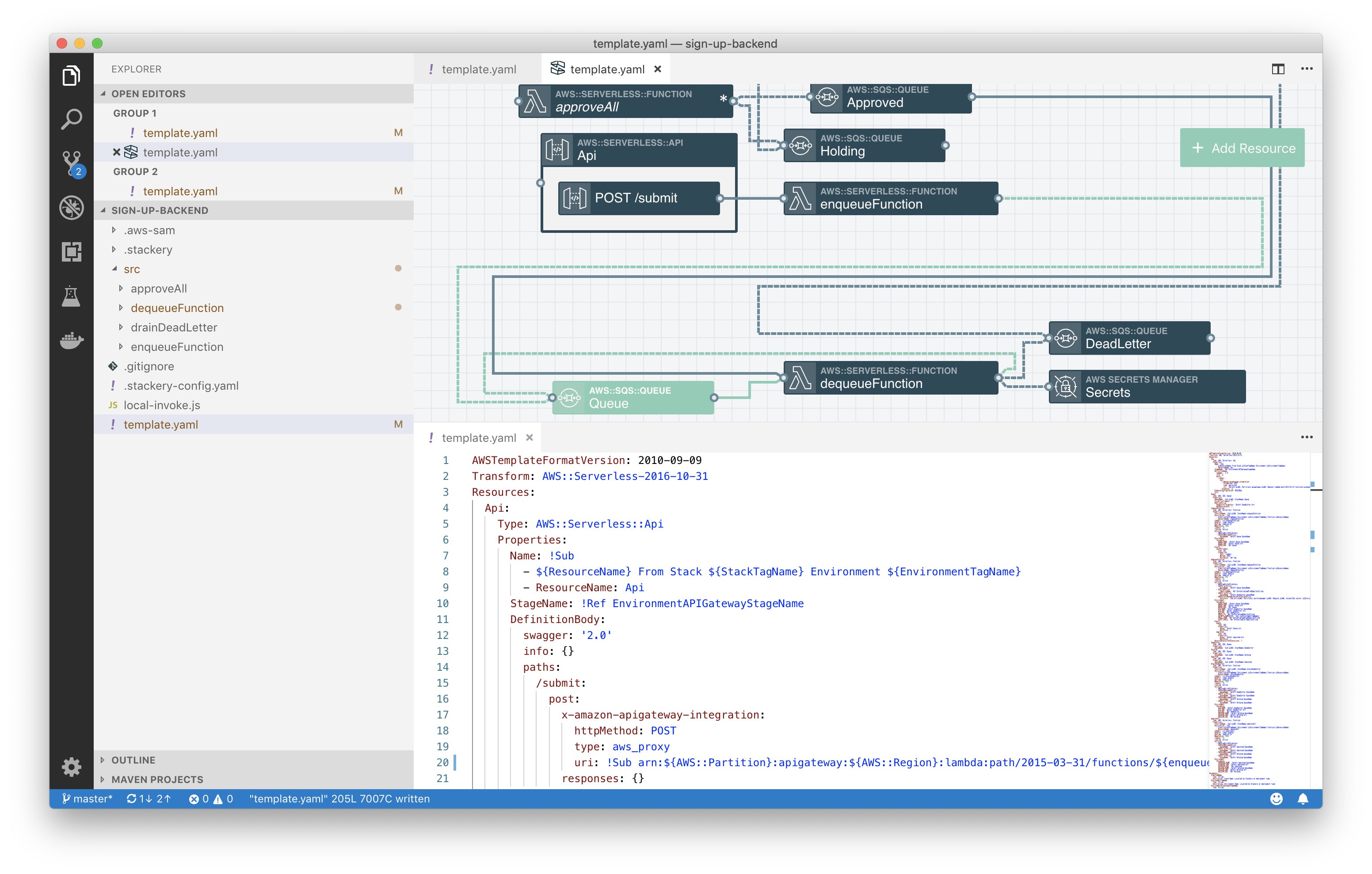Serverless in 2019: From 'Hello World' to 'Hello Production'


A Look Ahead
As the CTO of Stackery, I have had a unique, inside view of serverless since we launched in 2016. I get to work alongside the world’s leading serverless experts, our customers, and our partners and learn from their discoveries. It’s a new year: the perfect time to take stock of professional progress, accomplishments, and goals. The Stackery team has been in this mindset for months, focusing on what 2019 means for this market. After two-and-a-half years of building serverless applications, speaking at serverless conferences, and running the world's leading serverless company, I have a few ideas of what's in store for this technology.
1) Serverless will become "managed cloud services," not "FaaS"
As recently as a year ago, every serverless conference talk had an obligatory "what is serverless" slide. Everyone seemed to have a different understanding of what it all meant. There were some new concepts, like FaaS and "events" and a lot of confusion on the side. By now, this perplexity has been quelled and the verdict is in: serverless is all about composing software systems from a collection of cloud services. With serverless, you can lean on off-the-shelf cloud services resources for your application architecture, focus on business logic and application needs, while (mostly) ignoring infrastructure capacity and management.
In 2019, this understanding will reach the mainstream. Sure, some will continue to fixate on functions-as-a-service while ignoring all the other services needed to operate an application. Others will attempt to slap the name onto whatever they are pitching to developers. But, for the most part, people will realize that serverless is more than functions because applications are more than code.
I predict that the winners in serverless will continue to be the users capturing velocity gains to build great applications. By eschewing the burden of self-managed infrastructure and instead empowering their engineers to pull ready-to-use services off the shelf, software leaders will quickly stand up production-grade infrastructure. They'll come to realize that this exciting movement is not really "serverless" so much as it is "service-full" - as in applications full of building blocks as a service. Alas, we're probably stuck with the name. Misnomers happen when a shift is born out of necessity, without time to be fine-tuned by marketing copywriters. I’ll take it.
2) The IT Industrial Complex will throw shade
The IT Industrial Complex has billions of dollars and tens of thousands of jobs reliant on the old server model. And while these vendors are cloud-washing their businesses, the move to serverless renders them much less excited about the cloud-native disruption.
So get ready for even more fear, uncertainty, and doubt that the infrastructure old-guard is going to bring. It won't be subtle. You'll hear about the limitations of serverless ("you can't run long-lived jobs!"), the difficulty in adoption ("there's no lift-and-shift!"), and the use cases that don't fit ("with that latency, you can't do high-frequency trading!"). They'll shout about vendor lock-in — of course, they'd be much happier if you were still locked-in with their physical boxes. They'll rail against costs ("At 100% utilization, it's cheaper to run our hardware"), and they'll scream about how dumb the name "serverless" is (you’ve probably gathered that I actually agree with this one).
I'd rather write software than patch infrastructure any day.
The reality? The offerings and capabilities of the serverless ecosystem are on an improvement velocity, unlike anything the IT infrastructure market has ever delivered. By the end of 2019, we’ll have more languages, more memory, longer run times, lower latency, and better developer ergonomics. They'll ignore the operational cost of actually running servers — and patching, and scaling, and load-balancing, and orchestrating, and deploying, and... the list goes on! Crucially, they'll ignore the fact that every company invested in serverless is able to do more things faster and with less. Serverless means lower spend, less hassle, more productive and focused engineers, apps with business value, and more fun. I'd rather write software than patch infrastructure any day.
Recognize these objections for what they are: the death throes of an out-of-touch generation of technology dinosaurs. And, as much as I like dinosaurs, I don't take engineering advice from them.
3) Executives will accelerate pioneering serverless heroes
Depending on how far your desk is from the CEO of your company, this will be more or less obvious to you, but: your company doesn’t want to invest in technology because it's interesting. Good technology investments are fundamentally business investments, designed to drive profits by cutting costs, innovation, or both.
Serverless delivers on both cost efficiency and innovation. Its pay-per-use model is substantially cheaper than the alternatives and its dramatically improved velocity means more business value delivery and less time toiling on thankless tasks. The people who bring this to your organization will be heroes.
So far, most organizations have been adopting serverless from the bottom-up. Individual developers and small teams have brought serverless in to solve a problem and it worked. But in 2019 a shift will happen. Project milestones will start getting hit early, developers will be more connected to customer and business needs, and IT spend will come in a little lower than budgeted... And the executive team is going to try to find out why, so they can do more of it.
So my prediction is that in 2019, serverless adoption will begin to win executive buy-in and be targeted as a core technology initiative. Serverless expertise will be a very good look for your team in 2019.
4) Serverless-only apps will transition to serverless-first apps
“Hello World” applications in tutorials are good fun and their initial functions deliver rapid purpose without an operations team. They are great wins for serverless.
However, when it comes to building serverless business applications, every software team will need to incorporate existing resources into their applications. Production databases and tables, networks, containers, EC2 instances, DNS services, and more. Today, complex YAML combined with the art of managing parameters across dev, test, staging, and production environments hold many teams back from effectively building on what already exists. A note: Stackery makes using existing resources across multiple environments easy.
5) Modernization with serverless will kick into high gear
Perhaps most significantly, the great monolith-to-serverless refactoring will begin in 2019. **While greenfield apps led the way in serverless development, this year, word will get out that serverless is the fastest path to refactoring monoliths into microservices. In fact, because serverless teams obtain significant velocity from relying largely on standard infrastructure services, many will experience a cultural reset around what it means to refactor a monolith. It’s easier than ever before.
While “you can’t lift and shift to serverless” was a knock in 2018, 2019 will show the enterprise that it’s faster to refactor in serverless than migrate. They will see how refactoring in serverless takes a fraction of the time we thought it would take for a growing number of applications. Check out the Strangler Pattern to see how our customers are doing this today. When you combine this method with Lambda Layers and the rapid march of service innovations, the options for evolving legacy applications and code continue to broaden the realm of where serverless shines.
In 2019, serverless will serve you more.
In 2019, we’ll see enormous growth in applications that are serverless-first, but not serverless only. The “best service for the job” mantra is already driving teams under pressure to deliver results to serverless. We believe teams who want to move fast will turn to serverless for most of what they need, but won’t live in a serverless silo.
To conclude: In 2019, serverless will serve you more.
All of these predictions add up to one obvious conclusion from my perspective: Serverless is finally mainstream and it's here to stay. Stackery already helps serverless teams accelerate delivery from "Hello World" to "Hello Production". We'd love to help your team, too.
Related posts
